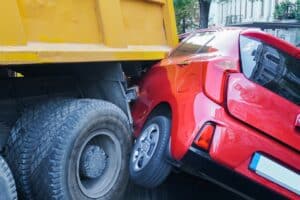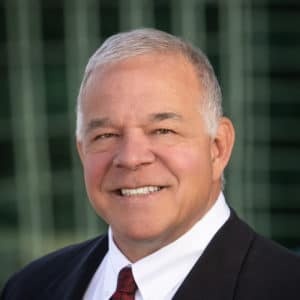Blind spots—areas where drivers cannot see around their vehicles—cause accidents when drivers fail to compensate for the lack of visibility. Blind spots cause many truck accidents because trucks have larger blind spots due to their size that time we need truck accident lawyers to solve accident cases. Large trucks also lack mirrors that further hinder visibility. Drivers can minimize these risks by taking certain precautions. Failure to do so could leave them liable for injuries caused by blind spot accidents.
Trucks’ Design Create Blind Spots

Part of the reason why trucks are so often involved in blind spot accidents is due to their inherent design. While other large vehicles, like pickup trucks or SUVs, can cut down on blind spots by installing fisheye mirrors, commercial trucks tend to have much larger areas that are difficult to monitor.
In fact, the Federal Motor Carrier Safety Administration (FMCSA) has a name for these blind spots: No-Zones. These are any areas around the truck where other vehicles become invisible. The FMCSA reports that a third of collisions between trucks and passenger vehicles occur in No-Zones.
A truck’s blind spots can extend ahead, behind, and to the side. Since the driver is on the left side of the vehicle, there is slightly more visibility on that side, but on the right, the driver may have difficulty seeing portions of several lanes.
Truck Size Creates No-Zones
Part of the issue with blind spots lies with the size of large trucks. To accommodate heavy loads, trucks are both tall and long, creating larger blind spots.
As a result, the larger the truck, the larger the blind spots and, therefore, the greater the risk of an accident.
A Lack of Mirrors Contribute to Accidents
Large tractor-trailers naturally can’t have rear-view mirrors; the trailer blocks the view. By lacking this small but vital piece of equipment, trucks and their blind spots can cause many accidents.
Other mirrors can help cut down on the risks. For instance, fisheye mirrors provide an expanded view. Developments in camera technology also provide additional assistance in checking No-Zones.
Behaviors That Worsen the Danger of Truck Blind Spots
As with any tool, drivers must use mirrors and other aids for them to prevent accidents. Even a smaller truck with additional mirrors can cause crashes if the driver doesn’t physically check a blind spot.
Other driver actions can make blind spots worse:
Speeding
Going over the speed limit is reckless for any motorist. Truckers traveling too fast may have less time to check blind spots and react. According to the FMCSA, in the amount of time it takes your brain to signal to your foot to brake, you can travel up to 60 feet. If a driver speeds, they can travel longer distances before coming to a stop, sometimes failing to prevent accidents.
Drivers are also responsible for adjusting their speed based on road conditions. Wet, snowy, or icy roads mean trucks need more time and distance to stop. A driver who does not check blind spots while going too fast in these conditions can cause accidents and injuries.
Failure to Look
The FMCSA’s Large Truck Crash Causation Study (LTCCS) found that 14 percent of truck accidents are due to poor surveillance—meaning the driver simply failed to look. Moreover, most accidents involving lane changes or merging stem from a driver’s recognition failure.
When changing lanes, merging, or turning, a truck driver should check their surroundings. That can include physically turning their body to check their No-Zones.
Failure to Signal
Even if a truck driver can’t see their blind spots, they can at least signal to cars in those blind spots before changing lanes or turning. Failing to signal could leave a truck driver liable for any accidents.
Following Too Closely
If cars are packed close together in traffic, truck drivers can have an even harder time seeing them. What’s more, a truck driver who tailgates has less space and time to react to something once they become aware of it.
Condition of the Driver
To avoid accidents by checking blind spots, a driver needs to be alert in the first place. An impaired driver is less likely to check No-Zones, notice problems, and react to hazards effectively.
Behaviors that increase accident risks include the four Ds:
- Drunk driving
- Drugged driving
- Drowsy driving
- Distracted driving
Alcohol, drugs, and inadequate sleep can reduce truckers’ ability to make judgments, act quickly, or recognize risks. Likewise, distracted driving can make a driver forget to check their surroundings. These all make driving with blind spots more dangerous.
Types of Accidents Caused by Truck Blind Spots
The type of accidents caused by No-Zones can depend on other drivers’ behavior as well, but some common crashes are:
- Sideswipes
- Rear-end collisions
- Override/underride crashes
- Multi-vehicle accidents
- Running off the road
- Head-on collisions
When Trucks Strike Other Vehicles
Perhaps the most obvious type of crash caused by truck blind spots are sideswipes (also known as “T-bone” collisions). These involve lane changes, merging, or turning. In these scenarios, a truck driver may not see cars on their left or right, causing side-impact collisions when the large truck moves into another vehicle’s lane.
In some cases, if the other car is small enough and the truck is high enough, the car can go underneath the truck. This is called an underride crash. Here, passenger vehicle occupants can face serious crushing injuries or even fatalities.
Large trucks also have blind spots on the front. A driver may have difficulty seeing a vehicle if it’s small enough and close enough in front of them, blocked from view by the front of the truck. This can cause an override crash—the truck drives over the smaller vehicle in front of them. Tailgating can contribute to this issue.
When Trucks Cause Multi-Car Collisions
Failure to account for blind spots can have a domino effect. For instance, a trucker can overcompensate when they suddenly see a car where they didn’t expect one. This can cause them to hit other vehicles. Sudden movements by a truck can cause all cars in the area to react, which can involve multiple vehicles in a crash.
Tight traffic can also mean that a truck that runs into one car pushes that car into another. Pileups like this can cause catastrophic consequences on roadways.
When Trucks Cause Other Cars to Crash
A truck driver who changes lanes or merges without checking their No-Zones could run another car off the road. This is the reason why blind spots can cause truck accidents without a truck driver actually hitting anything.
Even if a truck driver does not physically hit another vehicle, they are sometimes still liable for contributing to the crash. However, liability in these scenarios is sometimes tricky. So, you should consider consulting a truck accident attorney if you suspect this was a factor in your case.
Who Is Responsible in a Truck Accident Involving Blind Spots?
To determine responsibility for a truck accident, you must establish negligence. This comes with four elements, the first being duty of care. Everyone has a duty of care to operate their vehicles safely while on public roadways. If someone failed to uphold that obligation and caused your accident, you could pursue compensation through an insurance claim or a personal injury lawsuit.
Here’s an example of a truck driver’s negligence. A trucker clocks in for the day. They accept a duty of care to drive safely. Yet, halfway into their shift, they stop at a gas station and get beer to drink behind the wheel. This breaches the trucker’s duty of care since this action could endanger others. While intoxicated, the trucker causes a serious accident involving a passenger vehicle. Here, the trucker would be negligent.
In other scenarios, the truck driver is not liable. Other drivers also owe that truck driver a duty of care. That includes not engaging in the same dangerous behaviors, such as tailgating, speeding, or failing to check before merging or changing lanes.
Examples of Negligence Involving Blind Spots
In addition to the risky behaviors outlined above, other forms of negligence that could serve as the basis of a truck accident case include:
- A lack of mirrors or failing to adjust them
- Inadequate driver training
- Negligent hiring practices by the trucking company
- Failures in truck maintenance
- Defective auto parts, including mirrors and other visual aids
Understanding your truck accident’s cause can point to multiple liable parties. In that instance, if you suffered injuries, you could pursue damages from more than one entity.
When You Can Hold the Trucking Company Liable
Trucking companies are required to vet and train their employees. This is actually part of their duty of care to others on the road. As a result, if they failed to do so, they are potentially responsible for truck accidents, including ones involving blind spots.
For instance, a trucking company should educate its drivers on No-Zones as well as ways to minimize risks associated with them. It also has an obligation to equip the trucks themselves with preventative equipment. A lack of mirrors or inadequate ones, as well as failure to make use of other aids available, could leave the company open to liability.
Moreover, some trucking companies are simply liable for their employees’ actions, whatever form of negligence that takes. In those cases, the driver and company may share liability. You can potentially recover compensation through a claim with a trucking company’s insurer or file a lawsuit.
When You Can Hold a Third Party Liable
Occasionally, neither you, the truck driver, nor the trucking company are liable. This can happen when the issue is a defective part. That can mean a designer or manufacturer is responsible for creating, producing, and distributing faulty equipment.
Another scenario is if another company is typically responsible for maintaining the trucks. For instance, if an auto shop installed new accident-avoidance equipment incorrectly, their mistakes could make them responsible for the costs and losses from a truck blind spot accident.
Keep in mind, with these types of cases, you may have different statutes of limitations and filing requirements. Some states differentiate between personal injury cases and product liability cases. Personal injury attorneys can determine which applies to your truck accident.
How Can an Attorney Help After a Blind Spot Truck Crash?
Accidents involving blind spots can devolve into arguments over liability between drivers, truckers, and trucking companies. After all, proving that a driver failed to check their surroundings is admittedly complicated. If a truck driver caused your accident, they may accuse you of causing the collision, rather than the other way around.
An attorney with experience in these situations knows what evidence can demonstrate that a truck driver, their company, or another party was responsible.
Their support for your case can include:
- Talking to insurance adjusters and trucking company representatives
- Getting police accident reports and medical records
- Compiling evidence of one of the four Ds of impaired driving
- Interviewing eyewitnesses and gathering their photo or video evidence
- Obtaining truck drivers’ dashcam footage and driving records
- Investigating the trucking company’s hiring and training practices
- Assisting you in filing insurance and lawsuit paperwork
- Evaluating the individual deadlines and requirements for your case
- Identifying alternate paths to compensation, such as by pursuing third parties
- Negotiating a settlement that reflects your losses
- Representing you in court, if necessary
You Can Talk to a Truck Accident Lawyer About Your Blind Spot Questions

If you suffered a collision and still have questions about blind spots, consider consulting with an attorney. During a free consultation, you can learn if you have grounds to pursue compensation. When seeking assistance, inquire about a Pheonix personal injury law firm’s experience with blind spot truck accident cases, research its case results, and ask questions about your specific case.